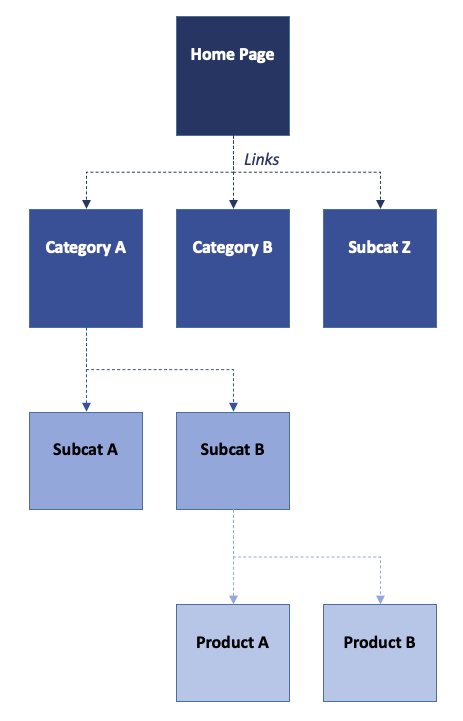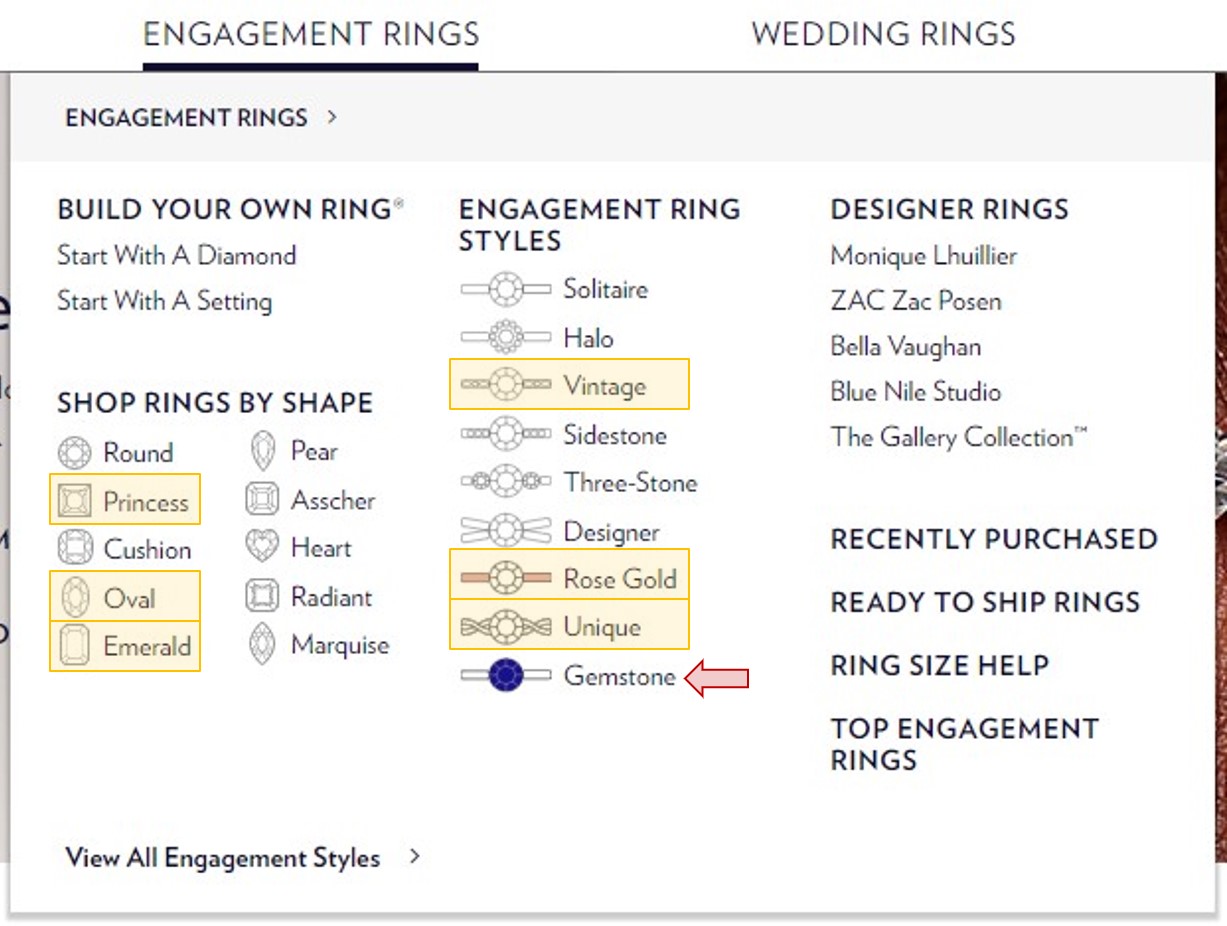The structure of your ecommerce site — categories, subcategories, attributes — heavily impacts search engine optimization.
This is the eighth installment in my “SEO How-to” series. Previous installments are:
- “Part 1: Why Do You Need It?“
- “Part 2: Understanding Search Engines,”
- “Part 3: Staffing and Planning for SEO,”
- “Part 4: Keyword Research Concepts,”
- “Part 5: Analyzing Keyword Data,”
- “Part 6: Optimizing On-page Elements.”
- “Part 7: Mapping Keywords to Content.“
Targeting Shopper Needs
Your site’s architecture impacts organic search performance. The taxonomy — the organization of products and attributes — plays a key role. It determines which pages exist and how they are linked.
SEO performance is strongest when those pages and linking structures reflect the needs of shoppers as expressed in their search queries. Keyword research helps you pinpoint those needs.
For example, you’d expect a jewelry etailer to have categories featuring products by metal type and color, such as yellow and white gold, and platinum. But a look at the top 15 engagement ring keywords below, as reported by Google Keyword Planner, shows that shoppers also want engagement rings by gender, style, cut, and gemstone.
| Keyword | Monthly Searches |
|---|---|
| engagement rings | 823,000 |
| rose gold engagement rings | 60,500 |
| vintage engagement rings | 49,500 |
| diamond engagement rings | 40,500 |
| rings engagement diamond | 40,500 |
| oval engagement rings | 40,500 |
| engagement rings for women | 40,500 |
| mens engagement rings | 40,500 |
| cheap engagement rings | 40,500 |
| unique engagement rings | 33,100 |
| sapphire engagement rings | 33,100 |
| princess cut engagement rings | 33,100 |
| moissanite engagement rings | 27,100 |
| opal engagement rings | 27,100 |
| emerald cut engagement rings | 27,100 |
If the site’s taxonomy meets shoppers’ keyword-expressed needs, by categories or product attributes, the SEO program can focus on optimizing the content on those pages.
For example, if gender is not a subcategory or attribute under an engagement rings category, the site will have a difficult time ranking for the keyword theme “men’s engagement rings.” There won’t be a page for men’s engagement rings to optimize.
That keyword (men’s engagement rings) represents 40,500 searches per month, not counting the supporting keywords that fall under the theme. It’s a large, untapped opportunity.
Which keyword themes in your research suggest new ways of organizing products to meet shoppers’ needs better?
Once a page exists within the architecture, the next steps are:
- Improving content relevance — what a page is called and how well it’s optimized for its mapped keyword theme. (For more, see “Part 6: Optimizing On-page Elements.”)
- Strengthening link authority.
Link Authority
Link authority is the value that search engines assign to a page based on the other pages across the web that link it.
Internal links impact authority, too. Most sites’ authority starts at the home page, which is what most external sites link to. Authority trickles down through internal links to each category, subcategory, and product detail page, as shown below.
The pages linked from the home page and from other pages with higher authority will receive greater amounts of authority, which they could pass to the pages they link to, and so on. The more clicks a page is from the home page, the less authority it will have.
The critical measurement is the number of links you have to click to reach a page.
For example, in the diagram below, the home page links directly to Subcat Z, in addition to Categories A and B. As a result, Subcat Z receives more link authority than Subcats A and B.

Most sites’ authority starts at the home page and trickles down through internal links to each category, subcategory, and product detail page.
Boosting Authority
We can’t have every page linking from your home page. It would detract from the customer experience. Instead, navigational structures provide quick pathways to the most valuable content on the site — for usability and SEO.
The header and footer navigation, for example, reside on all pages and link only to high-priority pages. That means that the pages that are linked in the header and footer receive some measure of link authority from every single page on the site.
That’s a powerful SEO tactic, as well as a critical aspect of user experience. Consider carefully what you need to rank for — based on keyword research — and then optimize your navigational elements for those phrases.
For example, the navigation for Blue Nile, a jewelry retailer, contains links to some of the most highly searched keyword themes, including the diamond cuts (princess, oval, and emerald) and styles (vintage, rose gold, and unique), which I’ve highlighted in yellow below.
The keyword data also showed an interest in specific types of gemstones, however, including sapphires. In lumping all gemstones together under one link, Blue Nile misses the opportunity to drive authority directly to a sapphire page.

The mega navigation structure in Blue Nile’s header links to important keyword themes.
Sitewide navigation isn’t the only powerful linking element, however. Most ecommerce sites offer category navigation or filtering to help shoppers navigate within that category. If it’s crawlable and indexable by search engines, category navigation can pass link authority to subcategories and filtered attributes.





